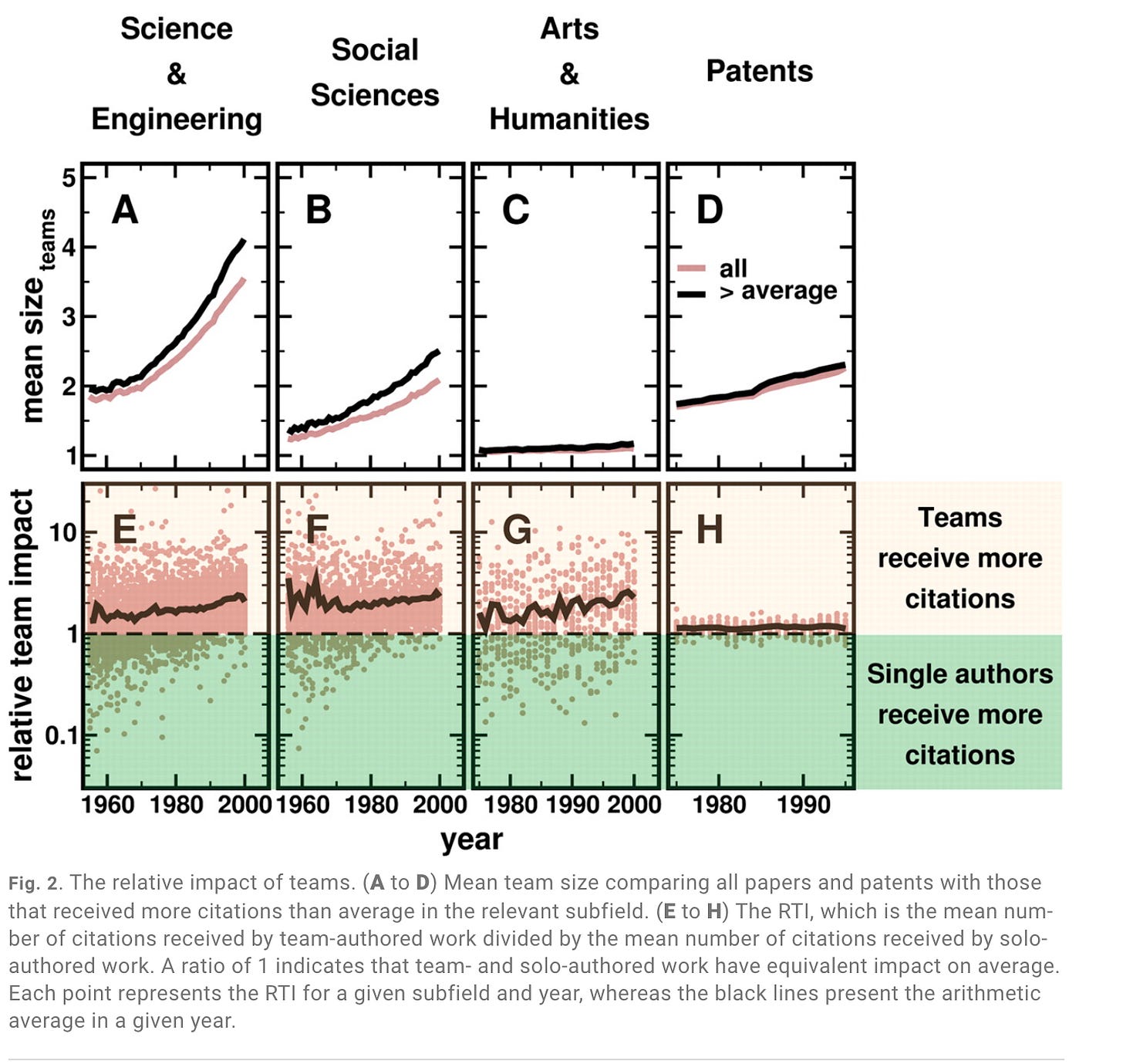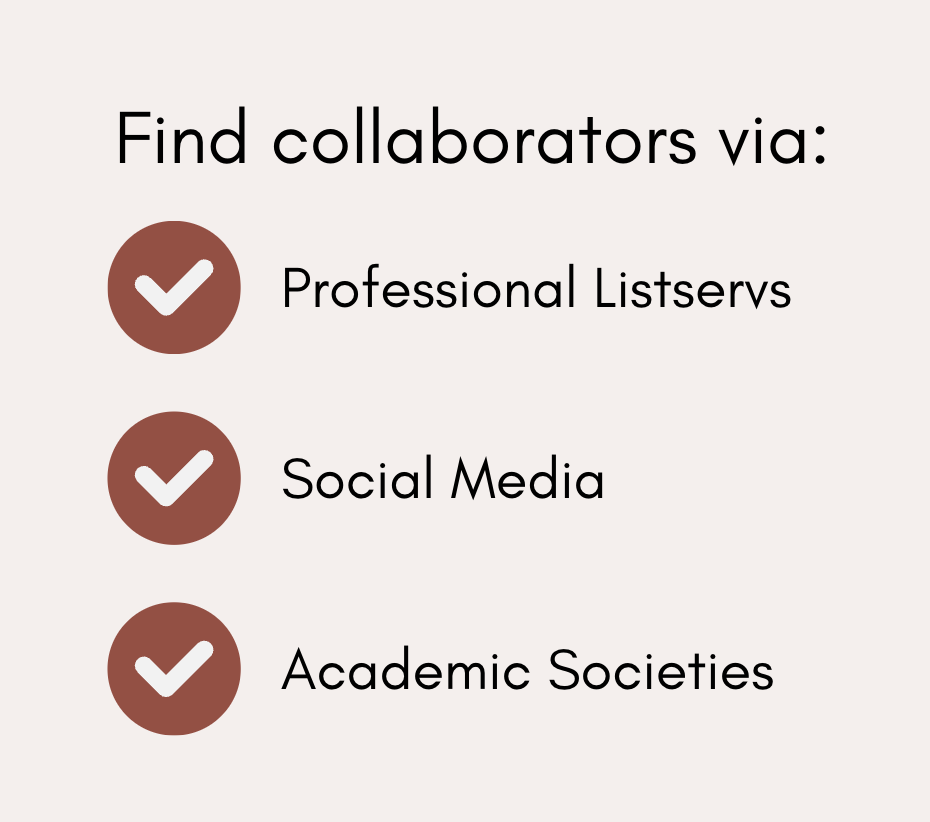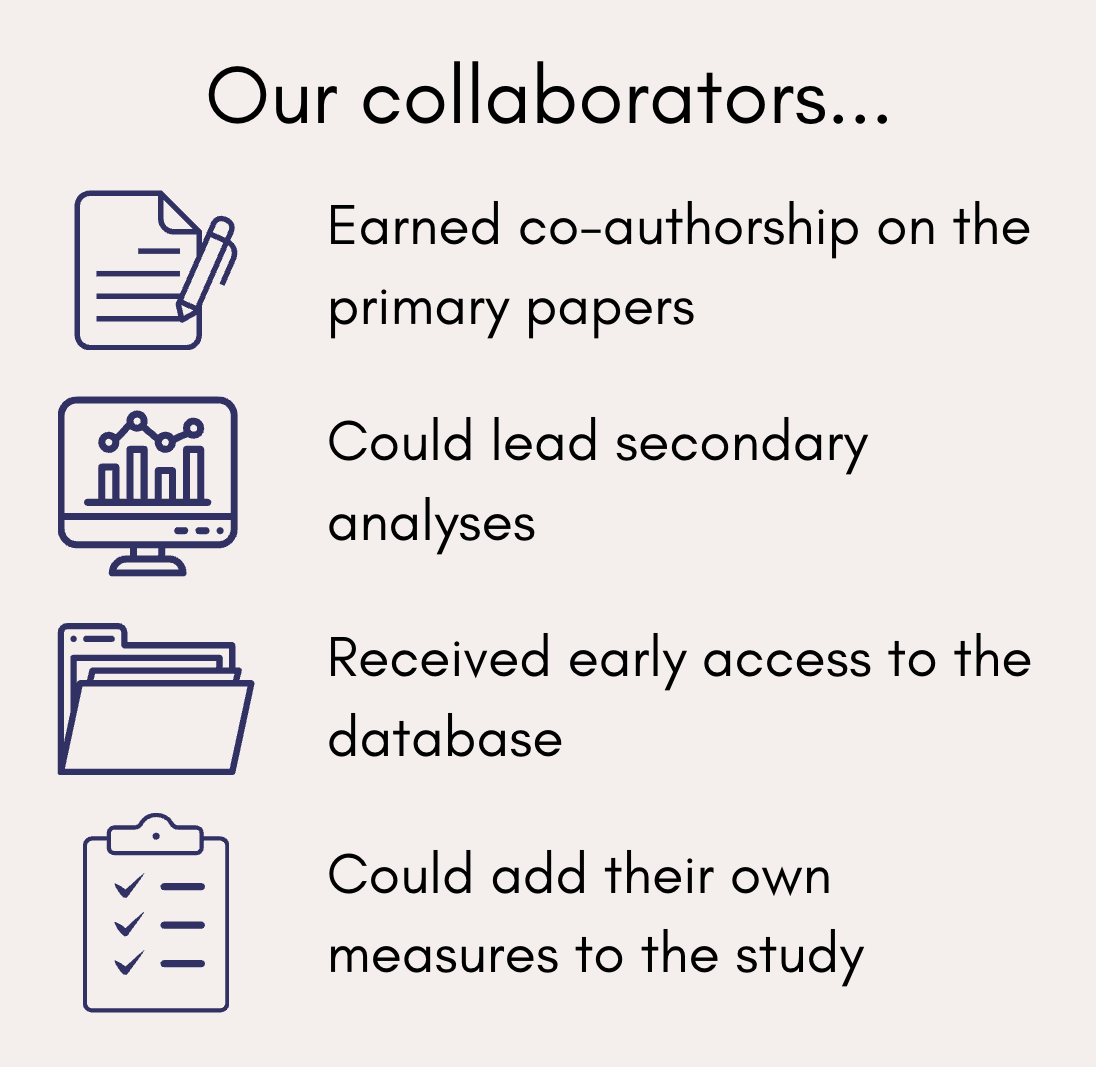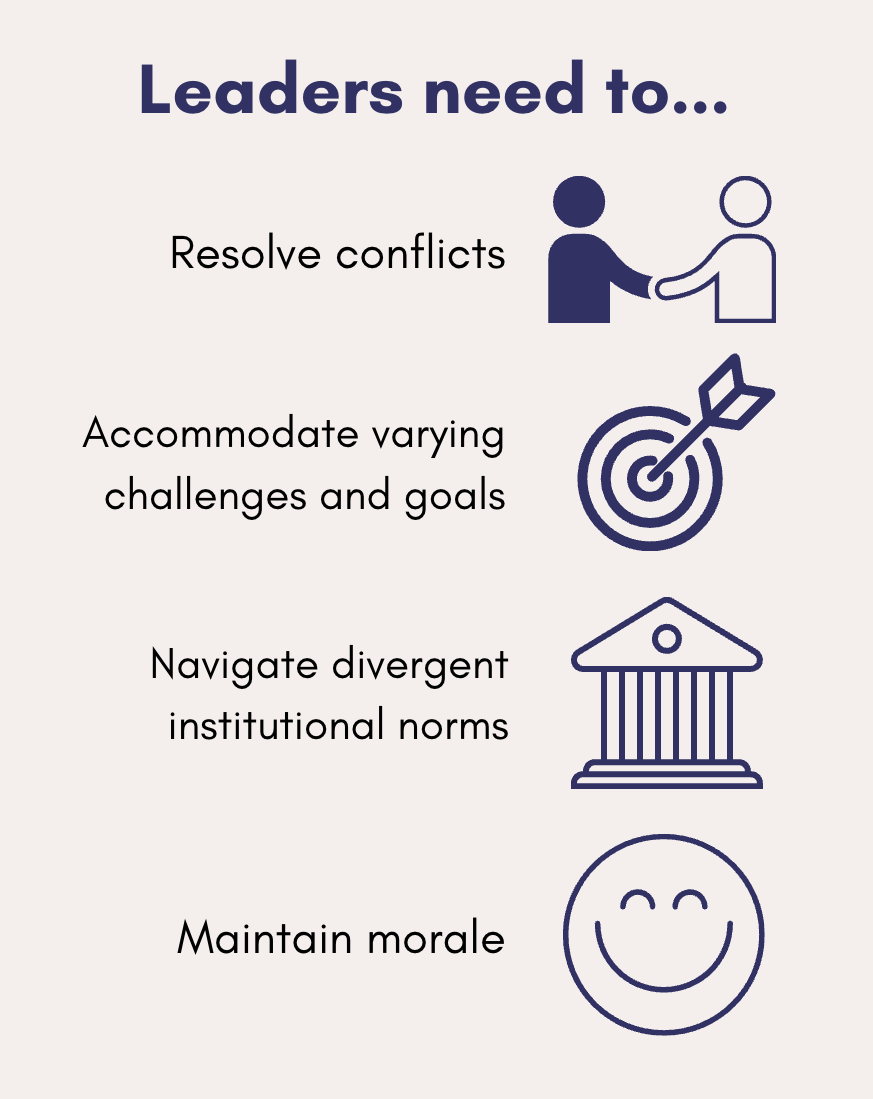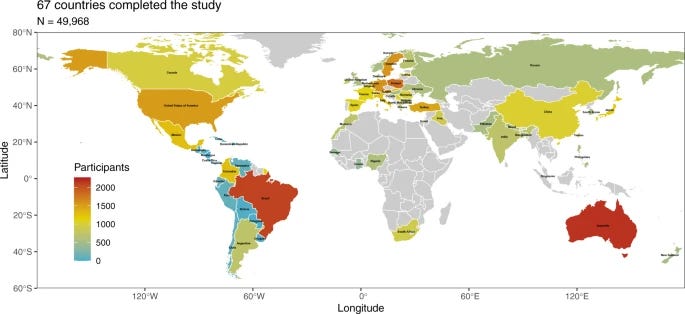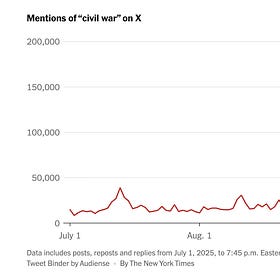Using the Science of Teams to Lead Scientific Teams
Issue 181: We offer four guiding principles to optimize large scientific collaborations based on the science of cooperation and collective intelligence
Scientific knowledge was historically advanced by individuals, and the reward structure in science reflects this tradition. Early career scientists are encouraged to establish their independence to demonstrate their genius—and many are even instructed to avoid collaborating with their mentors. Those who do it well eventually secure tenure. And the very best—from Albert Einstein to Marie Curie—might eventually win the Nobel Prize or another prestigious accolade.
So it was big news when a physics paper with 5,154 authors(!) broke the record for the largest number of contributors to a single research article. This team of scientists were working at the Large Hadron Collider to provide a precise estimate of the size of the Higgs boson—commonly referred to as “The God Particle”. It was a big deal.
The rise of team science has been one of the most fascinating and exciting developments across the sciences. Whether researchers are mapping the human genome and trying to understand cultural differences, larger collaborations have become the norm in modern science (see figure below to see the rapid growth across academic fields). In 1955, for instance, only 18% of the papers published in the social sciences were by teams, whereas by 2000 this number had risen to 52%. And this trend of large teams seems to have taken off in recent years.
Shattering from the notion of individual genius, the rise of collaborative science is also linked to greater breakthroughs. Research papers and patents by teams were more highly cited than were those produced by solitary individuals—even after adjusting for the number of authors. This means that great teams—rather than individual genius—has become the key to innovation.
As someone who has helped lead a number of these projects (including on public health, climate change, and social media), I was recently invited to write a paper outlining how to conduct these large scientific collaborations. The full paper is currently under review but you can access a free preprint here. This guide, which is also available as a pdf on our website, introduces four key principles for building effective large-scale collaboration and describes some caveats, pitfalls, and challenges of big team science. These insights draw both from the science of cooperation and from real-world experience leading large-scale projects.
Four guiding principles to optimize large scientific collaborations
Principle 1: Leveraging social networks for inclusive participation
After settling on a research question, the first step in launching a large project is finding collaborators. In more traditional partnerships, scholars often depend on their immediate interpersonal networks—colleagues, former students, or people they meet at academic conferences. However, this approach tends to reinforce existing hierarchies and restrict opportunities for researchers from underrepresented groups or regions. By turning to platforms like academic societies, large professional listservs, and social media, researchers can leverage much broader social networks and tap into far more diverse samples.
In our projects, we issued open invitations for collaboration, and hundreds of researchers from six continents volunteered. Posting these open calls on listservs and social media democratized participation and added tremendous linguistic, cultural, and methodological diversity to our expertise and samples. This inclusive approach improves science by producing larger, more diverse datasets, making it possible to do cross-cultural analyses.
While conducting these projects, we also noticed that reputation carries a lot of weight. Researchers said they were more inclined to sign on when the project was led by teams with a proven track record—both in producing high-quality research and in running inclusive collaborations. The issue is that this dynamic can reinforce the status of senior academics or faculty at prestigious institutions, which makes it all the more important to put formal, inclusive practices in place so early-career researchers and scholars from underrepresented regions are not sidelined.
0Institutional initiatives to big team science, like the Psychological Science Accelerator, provide a promising model by building inclusivity directly into their recruitment systems. But these organizations can sometimes move slower than grassroots efforts, making them less agile when research questions are time-sensitive, such as during a pandemic or climate crisis. Therefore, to create a healthy ecosystem for big team psychological science, we should embrace multiple approaches with complementary strengths.
Principle 2: Aligning incentives to foster interdependence
Because participation in large-scale projects is typically voluntary, figuring out how to spark and sustain engagement becomes a central challenge. Here, the notion of interdependence is crucial. A long line of research finds that when people recognize their outcomes as intertwined with those of others, they are far more likely to cooperate. For global collaborations, this sense of shared stakes can be nurtured by designing incentives that align across teams and by ensuring that every contributor has meaningful ways to shape the work.
For instance, we’ve built large-scale projects where every collaborator was invited to propose preregistered secondary analyses and then received early access to the dataset to publish their own papers (on top of earning co-authorship on the project’s primary papers). Our collaborators took the lead on these secondary papers—usually without direct involvement from the original lead authors—so they could earn first-author credit for pursuing their own theoretical questions. We also gave collaborators the option to tack on a limited number of their own measures to the core study, opening the door for locally specific or culturally relevant research questions to be investigated. This model kept people engaged over the long term, generated more than 50 follow-up publications from the initial dataset, and magnified the overall impact of the original data collection.
By deliberately distributing both credit and decision-making power, we moved the project away from a centralized model and toward a cooperative one. Plus, this structure helps guard against social loafing, the well-documented tendency for effort to drop in large groups, by making sure each collaborator has clear and visible ownership of specific outcomes. It also promoted fairness by giving contributors privileged access to a rare and valuable dataset and opening up many different opportunities for authorship.
After our main paper was in print, we wrote a separate paper making the dataset available to the scientific community (here is an example from our paper on COVID-19 and another from our paper on climate change). Taken together, these choices broadened the circle of people who could translate their involvement into tangible outputs—publications, career opportunities, and recognition— beyond what most big-team science models typically allow.
Principle 3: Coordinating collective intelligence and distributed processing
While interdependence drives motivation, coordination is what ensures that work actually moves forward. As teams grow larger, so does the risk of process loss—the wasted effort, redundancies, and coordination problems that inevitably creep in when many people are trying to work together. To stay ahead of these pitfalls, we turned to research on team cognition and collective intelligence.
To put this into practice, we built a modular leadership structure with clear roles and responsibilities, and with turn-taking for decision making. We created regional leads, analytic coordinators, and writing teams who managed specific parts of the project and reported to a central leadership committee. This structure allowed for highly efficient parallel processing, where multiple parts of the project advanced simultaneously without overburdening any single individual. At the same time, it relied on open communication across groups, collective input on major decisions, and decisive action from the central leadership team to keep it all aligned.
We also created a regular newsletter with project updates. This system cut down on confusion, gave collaborators a sense of shared identity, and helped contributors around the world stay connected to the mission and up to speed on developments. Much like collective intelligence depends on the efficient exchange of information, big-team science works best when its infrastructure supports work that is both efficiently distributed and tightly integrated. This approach also spared us from endless all-hands meetings, which tend to eat up time and stall momentum.
Principle 4: Managing interpersonal conflict
Every successful global collaboration requires a great deal of conflict management, especially for project leads. In fact, we have found that managing hundreds of collaborators is like running a small institution. Leaders must resolve conflicts, accommodate people with different challenges and goals, navigate divergent institutional norms, and maintain morale. These responsibilities can be particularly taxing for early career researchers who might not receive the respect necessary to resolve disputes or who may lack the experience to juggle so many moving parts.
In each of our large projects, conflicts inevitably arose over research design, data analysis, authorship, and how findings should be shared. Sometimes the solution was straightforward, like sharing authorship or giving collaborators the opportunity to lead their own paper. But no single fix works for every situation; each conflict needs its own tailored response. Handling this well depends on clear, well-structured leadership and a good measure of emotional intelligence—qualities that help defuse tensions and guide tough decisions.
Although much of this work goes unseen, it warrants both recognition and institutional support. Training programs in areas like conflict resolution, inclusive leadership, and emotional resilience could better prepare leaders to handle these challenges. Funders and journals also have a role to play: they should acknowledge and reward the leadership of big-team science, not just the papers that result from it.
Caveats, Pitfalls, and Challenges
Big projects require big budgets
One of the biggest hurdles for this kind of work is, quite simply, the corresponding cost. Large-scale projects demand large budgets, particularly when paid data collection is involved. In one global project, for example, we asked collaborators to gather representative samples from their countries. To our dismay, we found that only collaborators from relatively rich countries were able to fund representative samples, while collaborators from other countries were limited to convenience samples. Hence, truly inclusive science will require far larger budgets and an equitable distribution of resources.
'Without meaningful increases in grant funding, projects will continue to fall short, skewing samples toward wealthier nations and institutions. In our current "global social media experiment” we secured grants early in the process to help fund data collection in 23 countries from a diverse sample of countries. The funding also paid for a staff member to help engage in quality control and other administrative tasks.
Obtaining collaborators from non-Western contexts can be difficult
We also found that simply issuing open calls for collaboration did not guarantee global participation. Many scholars outside Western countries aren’t on professional listservs and use different social media platforms. On top of that, their institutions may not provide the time or resources needed to take part in side projects, making it even harder for them to join. For example, our study on moral and social psychology during COVID-19 included collaborators from around the world and data from 67 countries. Yet, we were still missing data from many countries in South America, Africa and Asia (as you can see in the map below).
It is therefore essential for big team science to create more leadership opportunities for scholars based outside of Western institutions. Doing so would not only diversify our data and strengthen our conclusions, but also spark new research questions and help build global networks and opportunities beyond the field’s usual centers of influence. Making this possible will require targeted funding to support non-Western labs in leading large projects, as well as professional organizations stepping in to build new research networks and funding agencies backing a wider variety of teams. Because resources are distributed so unevenly across the scientific world, these problems are difficult to solve, but even incremental progress can help build a better future for big-team science.
A big project should have big impact
Finally, a large-scale project should address an impactful research question that is worthy of the time, effort, and resources it will require. These projects ideally also should leverage a sufficiently diverse set of authors or samples to address the question at hand. All in all, before undertaking a global collaboration, researchers should be sure their question is well suited to the big-team science approach.
I’d like to thank Anni Sternisko and Hannah Karsting for helping to create our Guide to Build Effective Global Collaborations and drafting this column.
News and Updates
In related news, a paper that lab postoc Dr. Rémi Thériault co-authored—which called for a more globally diverse, equitable, and inclusive open science—recently won a Commendation Award from the Society for the Improvement of Psychological Science!
Our lab just released a preprint on “An Identity-based Approach to Polarization and Public Health”. The paper explains the impact of polarization on public health, led by postdoc Dr. Raunak Pillai. Keep an eye out for a summary in an upcoming newsletter!
Dr. Anni Sternisko, co-director of the Center at NYU, will be a keynote speaker at Rethinking the Future III: Fostering Social Equality, a conference organized by the National Institute of Science and Technology on Social and Affective Neuroscience in São Paulo, Brazil. The conference brings together leading scholars in neuroscience, psychology, and the social sciences to explore critical issues related to inequality and social connection. Click here to register
Dr. Rémi Thériault, also recently coauthored a paper in Psychological Methods that discusses multiverse analyses, offering a step-by-step tutorial to help researchers use crowdsourcing to make multiverse analyses more objective and transparent. There is also an AI podcast summary of the paper.
Ask Me Anything sessions for fall! Paid Subscribers can join us for our monthly live Q&A with Jay or Dom where you can ask us anything from workshopping research questions, career advice to opinions and recommendations on pop culture happenings—for paid subscribers only.
Sept 11th: 4:00 EST with Jay (this happened today and was a lot of fun!)Oct 16th 4:00 EST with Dom
Nov 6th 4:00 EST with Jay
Dec 11th 4:00 EST with Dom
Catch up on the last one…
Last week’s post was about how social media fuels negativity, division, and hostility, and how we can create healthier, more balanced digital spaces (and read this excellent substack column by Derek Thompson on political violence that draws from our research).
Social Media and Political Violence
This week social media platforms are being blamed for inflaming divisions before—and after—Charlie Kirk’s murder.




